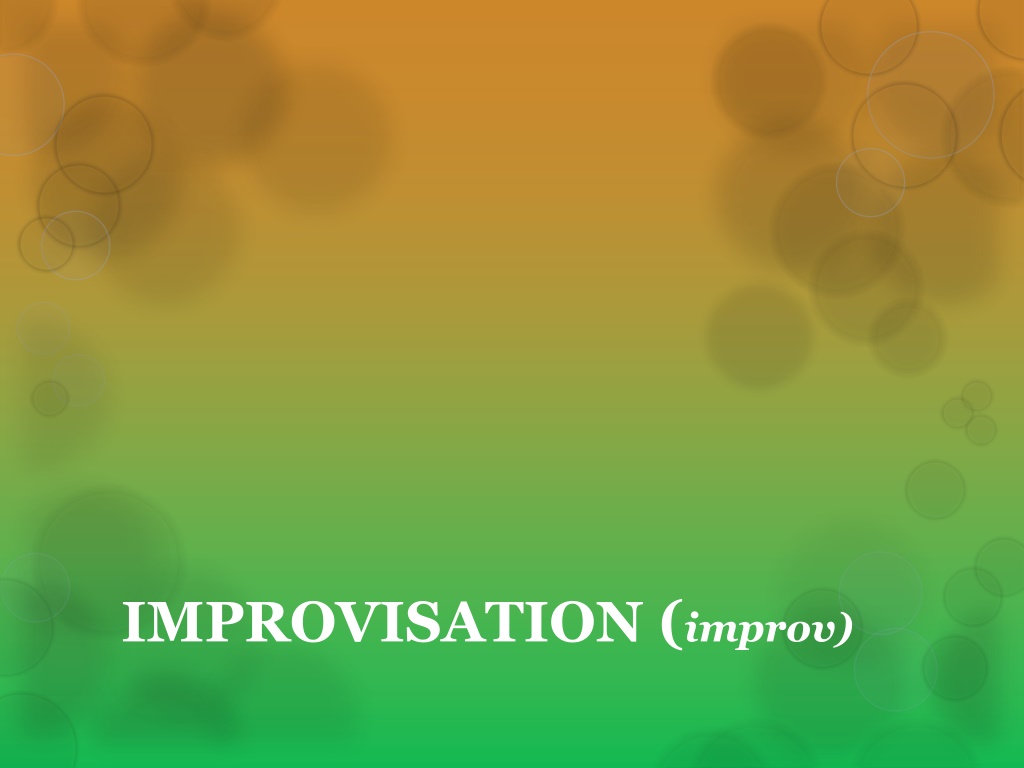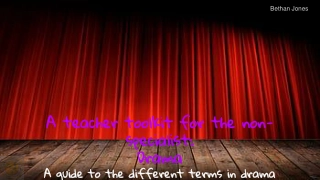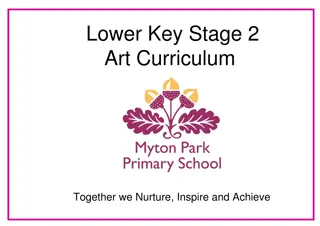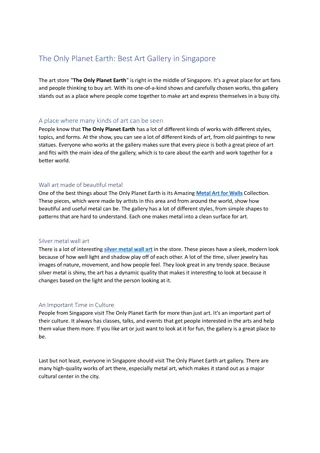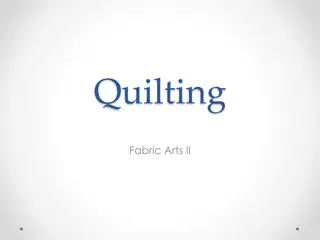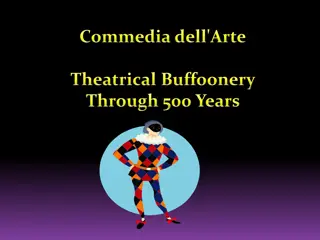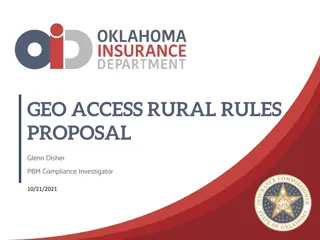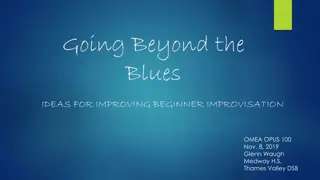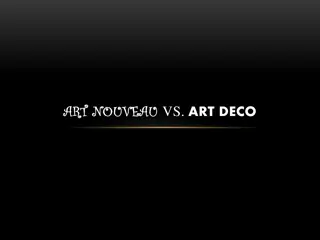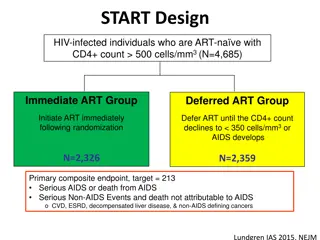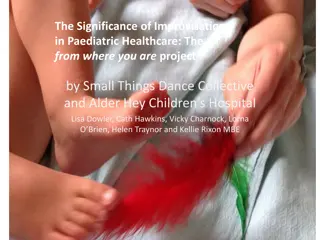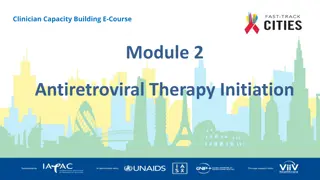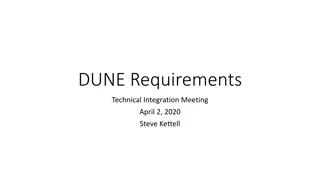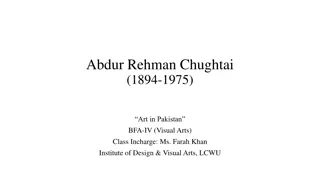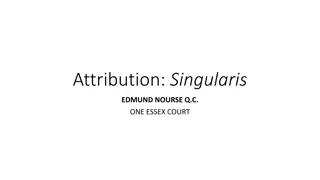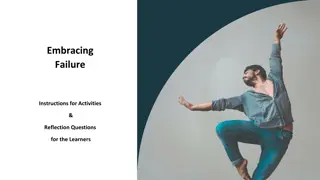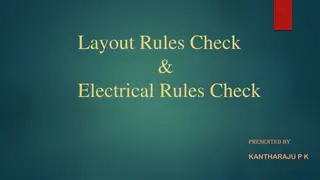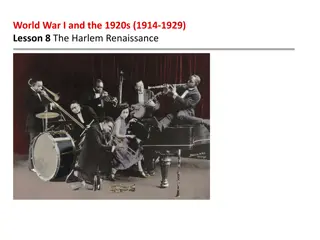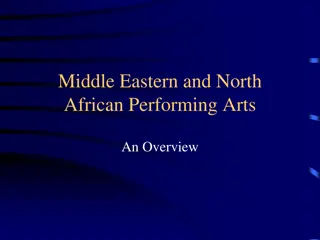Mastering the Art of Improvisation: Rules, Requirements, and Techniques
Delve into the world of improvisation as you explore the rules, guidelines, and essential questions that shape successful improv performances. Discover the nuances between educational and professional improvisation, the structure of improvisational narratives, and the key components that contribute to creating compelling scenes. Learn about the development of characters, portrayal of personalities, and the fundamental rules that govern improvisation techniques. Uncover the importance of spontaneity, concentration, and active listening in enhancing actor skills, as well as the significance of creating a conducive environment for collaborative improvisation.
Download Presentation

Please find below an Image/Link to download the presentation.
The content on the website is provided AS IS for your information and personal use only. It may not be sold, licensed, or shared on other websites without obtaining consent from the author. Download presentation by click this link. If you encounter any issues during the download, it is possible that the publisher has removed the file from their server.
E N D
Presentation Transcript
Essential Questions: How do the rules of Improvisation help create successful improv? How do the requirements/guidelines of educational improvisation differ with that of professional improvisation? What is the relationship between C.O.R.E. to creating successful improvisation?
BEFORE THEY BECAME BIG Tina Fey & Rachel Dratch Wicked @ Second City, Chicago http://youtu.be/2kyMyFOODA8
What is IMPROVISATION? Improvisation is ______________________________. ACTING ON THE SPUR-OF-THE MOMENT 1. ________________ TO ENTERTAIN PURPOSE of Improvisation: 2. ________________________________________ TO STRENGTHEN ACTOR SKILLS; spontaneity, concentration, listening STRUCTURE of Improvisation: (narrative elements) 1. ________ 2. ________ 4. ________ WHO 3. ________ END BEGINNING MIDDLE CLIMAX Point at which the conflict cant go any further without bringing about the resolution 5. ________ WHAT 6. ________ WHERE CONFLICT problem/struggle Develop the Resolve the conflict 7. ________ ________ ________ conflict
REQUIREMENTS / GUIDELINES of Improvisation: 1. _______________________________ NO SCRIPT 2+ CHARACTERS 2. _______________________________ 3. _______________________________ COMPLETE STRUCTURE LIMITED PREPLANNING 4. _______________________________ CONDUCT / BEHAVIOR of Improvisation: ALWAYS GIVE AND TAKE (endowwith clues to local or character) 1. ___________________________________ ABSOLUTELY NO BROWN BAGGING; inappropriate language, actions or content within a scene 2. ___________________________________
THE DEVELOPMENT AND PORTRAYAL OF A PERSONALITY THROUGH THOUGHT, ACTION & DIALOGUE. C = __________ CHARACTER A CHARACTER S GOAL OR INTENTION O = __________ OBJECTIVE THE ATTITUDES AND INTERACTIONS BETWEEN CHARACTERS IN A SCENE R = ____________ RELATIONSHIP THE CREATED PHYSICAL SPACE OF A SCENE ENVIRONMENT E = ____________
RULES of Improvisation: 1. __________________ SHOW, DON T TELL TELL SHOW **Don t _____ us how you feel, ______ us how you feel!!! show HAPPINESS: ...big smile, quick-uplifting walk, hugging, shaking hands, dialogue- it s a beautiful day show AWKWARDNESS: being hesitant in expressing yourself, difficulty in being assertive or being prone to clumsiness. DOING ACTING IS _______!
RULES of Improvisation: 2. ____________ DON T DENY Denial is: ______________________________ DISPUTING SOMETHING THAT HAS ALREADY BEEN ESTABLISHED. teacher: Your son Johnny has been causing a disturbance in class parent: I don t have a son named Johnny .... this is denial.... the intention of the parent may be to avoid taking responsibility for his son, but it is denial because the information has already been established. YOU CAN NOT CHANGE IT *Once something is established, _____________________ unless it____________________________________. BECOMES A WAY OF FURTHERING THE PLOT. NOT LISTENING * Denial is usually a result of either _____________ or refusing to give up ___________________of what is going to happen next in a scene. A PRECONCEIVED IDEA
ARGUING *Denial is NOT _________ . Arguing is the_________________________________ INTERACTION OF PEOPLE WITH OPPOSING POINT OF VIEWS ON A PARTICULAR MATTER. A: It s your turn to do the dishes tonight, I did them last night. B: No you didn t, I did them last night. ... this only leads to no you didn t, yes I did argument... = denial ...instead, make the response more effective: B: I know it s my turn to do the dishes, but since I cooked dinner every night this week, maybe you should take an extra turn. = no denial, conflict is being maintained and action is furthered A SURPRISE TURN OF EVENTS *Denial is NOT _______________________ (when something that appears to one thing and later turns out to something else) *Denial will momentarily ________________! STOP THE ACTION
RULES of Improvisation: PLAY THE MOMENT 3. __________________ Play your scene from __________ to _________ and MOMENT MOMENT concentrate on what s happening in the __________ , NOT PRESENT what s going to happen next. *DON T ____________ action, or else you will miss what s ANTICIPATE happening right now! OBSERVANT *Take cues from your scene partner (s) and be____________ and _______! LISTEN
RULES of Improvisation: BE HONEST 4. ____________ Believe in what you are doing. Respond and React TRUTHFULLY _____________ to each moment on stage. *You can be as bizarre or extreme as you want to be as long as you treat anything you do on stage as reality for that moment! *If you __________ it, so will the audience! BELIEVE *NEVER ______________________!! DO NOT laugh, BREAK CHARACTER stop or be yourself. It shows you do not believe in what you are doing on stage.
Top 10 Improvised Movie Moments http://youtu.be/So9iCqdfUF4 Skip #9;
